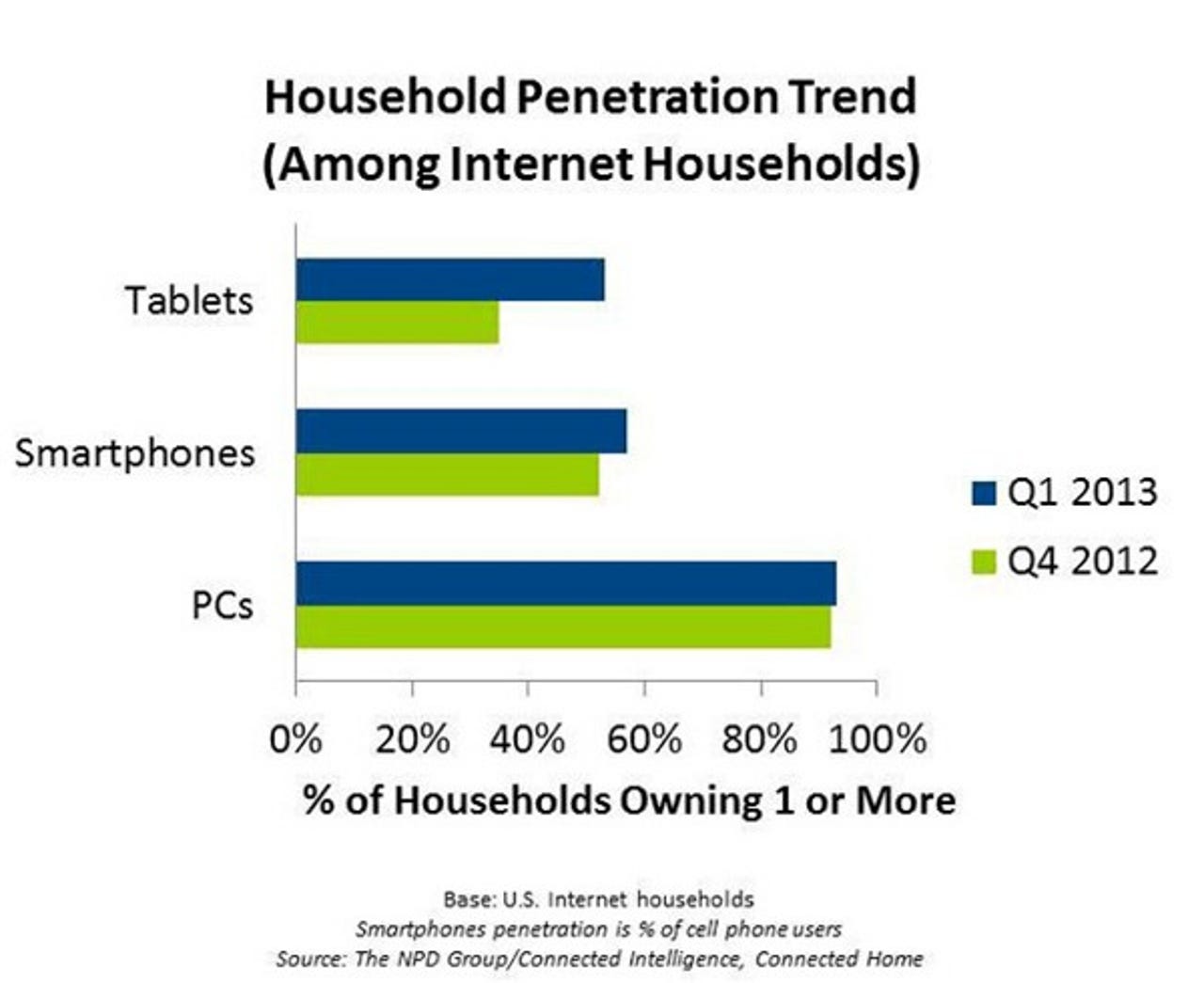Half-a-billion internet-connected devices and counting

In my home-office, I have 36 internet-connected devices. That's 12 PCs, 8 laptops, 5 tablets, 5 internet TV devices, 4 servers, an iPod touch and a printer. That's a lot, but the rest of the US is catching up with me.

According to market-research company The NPD Group, the average US internet household now has 5.7 internet-connected devices. That's up from 5.3 devices only three months ago. By their count, there are now more than half-a-billion internet-connected devices in the US alone.
While the good old PC is still the most commonly connected device, the real growth is coming from tablets and smartphones. In the last quarter alone, NPD saw nearly 18 million more tablets and 9 million more smartphones appear. Specifically, "Apple and Samsung remained the most prevalent smartphone brands consumers own, and Apple continues to dominate the tablet market".
In a statement, John Buffone, NPD Connected Intelligence' director said, "Even with this extraordinary growth in the smartphone and tablet market, PCs are still the most prevalent connected device in US internet households, and this is a fact that won't be changing any time soon. However, when you look at the combined number of smartphones and tablets consumers own, for the first time ever, it exceeded the installed base of computers." Specifically, NPD found that smartphone penetration rose from 52 percent to 57 percent of cell phone users, while tablet penetration increased significantly from 35 to 53 percent of internet households.
So what are we using all these devices for? In an earlier blog posting, Buffone noted that, "We can now watch HBOGO on three TVs in our home. Last night, we saw they started promoting its availability on AirPlay. As an early adopter, my first thought was, 'I want an Apple TV, too'. But there is no need, as all three TVs we own provide HBOGO, and each through a different type of device. Apple TV does, however, offer screen mirroring, which none of the other connected devices in our home provide, and that is bound to be useful — right? At least, this is often the thinking and behaviour of early adopters, which is quite different than that of the general consumer. It's these 'events', such as the availability of a prominent service like HBOGO, that often drive consumers to new technology. As devices such as Apple TV, Roku, Xbox, and others offer increased utility and easier ways to access the content you want to watch. This results in more mass-market consumers getting engaged."
In short, NPD is recognizing what a lot of us — including Netflix — already knew: People are increasingly turning to internet-based video and audio for their entertainment needs. Indeed, by late 2010, Netflix had already become the single largest internet service, leaving web use and peer-to-peer (P2P) file-sharing eating its dust. In fact, by late 2012, Netflix alone was taking up a third of all download traffic in North America during the evening hours.
That's great, but there's a problem with this. As Netflix and other on-demand internet video services become more popular, our internet bandwidth will struggle to keep up with the demand. That's especially true if you rely on 4G for your internet connection. As more and more devices ask for more and more video, our internet bandwidth is going to start to become overwhelmed. In 2010, the major US internet registry VeriSign said that the internet's bandwidth needed to increase by a factor of one thousand. They may have underestimated it.
At the same time, behind the scenes where users never go, we're continuing to run out of old-style IPv4 internet addresses. ISPs and users are not moving as quickly as they should to IPv6. The American Registry for Internet Numbers (ARIN) is still on track to run out of conventional IPv4 addresses on March 22, 2014. With so many more smartphones and tablets arriving on the internet, I suspect we're going to be running out sooner than that.
In other words, it's dandy that we're all getting so connected, but we're quickly getting to a point where our internet infrastructure may not be able to keep up with all our devices.
Related stories